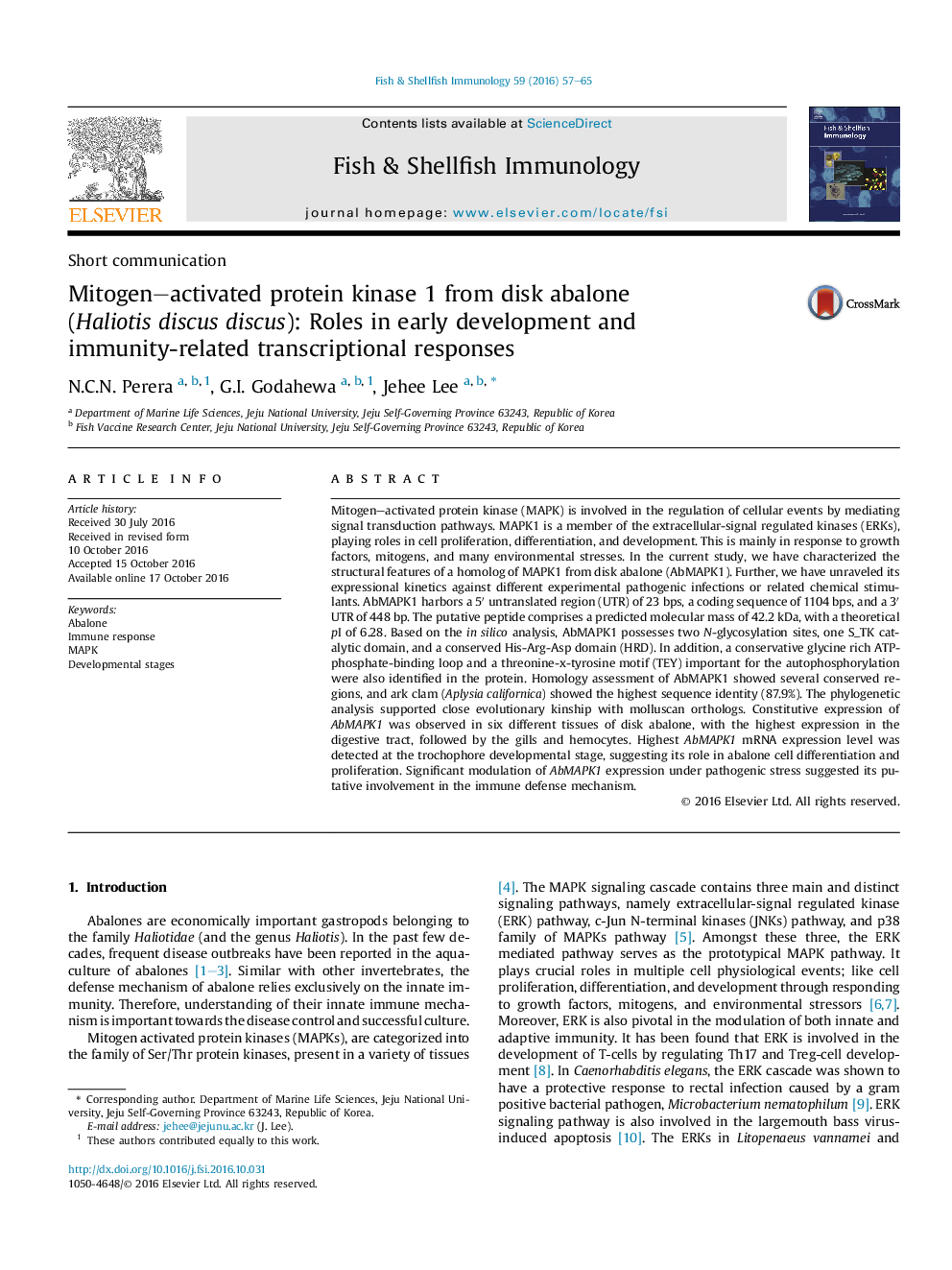| Article ID | Journal | Published Year | Pages | File Type |
|---|---|---|---|---|
| 5540813 | Fish & Shellfish Immunology | 2016 | 9 Pages |
Abstract
Mitogen-activated protein kinase (MAPK) is involved in the regulation of cellular events by mediating signal transduction pathways. MAPK1 is a member of the extracellular-signal regulated kinases (ERKs), playing roles in cell proliferation, differentiation, and development. This is mainly in response to growth factors, mitogens, and many environmental stresses. In the current study, we have characterized the structural features of a homolog of MAPK1 from disk abalone (AbMAPK1). Further, we have unraveled its expressional kinetics against different experimental pathogenic infections or related chemical stimulants. AbMAPK1 harbors a 5â² untranslated region (UTR) of 23 bps, a coding sequence of 1104 bps, and a 3â² UTR of 448 bp. The putative peptide comprises a predicted molecular mass of 42.2Â kDa, with a theoretical pI of 6.28. Based on the in silico analysis, AbMAPK1 possesses two N-glycosylation sites, one S_TK catalytic domain, and a conserved His-Arg-Asp domain (HRD). In addition, a conservative glycine rich ATP-phosphate-binding loop and a threonine-x-tyrosine motif (TEY) important for the autophosphorylation were also identified in the protein. Homology assessment of AbMAPK1 showed several conserved regions, and ark clam (Aplysia californica) showed the highest sequence identity (87.9%). The phylogenetic analysis supported close evolutionary kinship with molluscan orthologs. Constitutive expression of AbMAPK1 was observed in six different tissues of disk abalone, with the highest expression in the digestive tract, followed by the gills and hemocytes. Highest AbMAPK1 mRNA expression level was detected at the trochophore developmental stage, suggesting its role in abalone cell differentiation and proliferation. Significant modulation of AbMAPK1 expression under pathogenic stress suggested its putative involvement in the immune defense mechanism.
Related Topics
Life Sciences
Agricultural and Biological Sciences
Aquatic Science
Authors
N.C.N. Perera, G.I. Godahewa, Jehee Lee,
